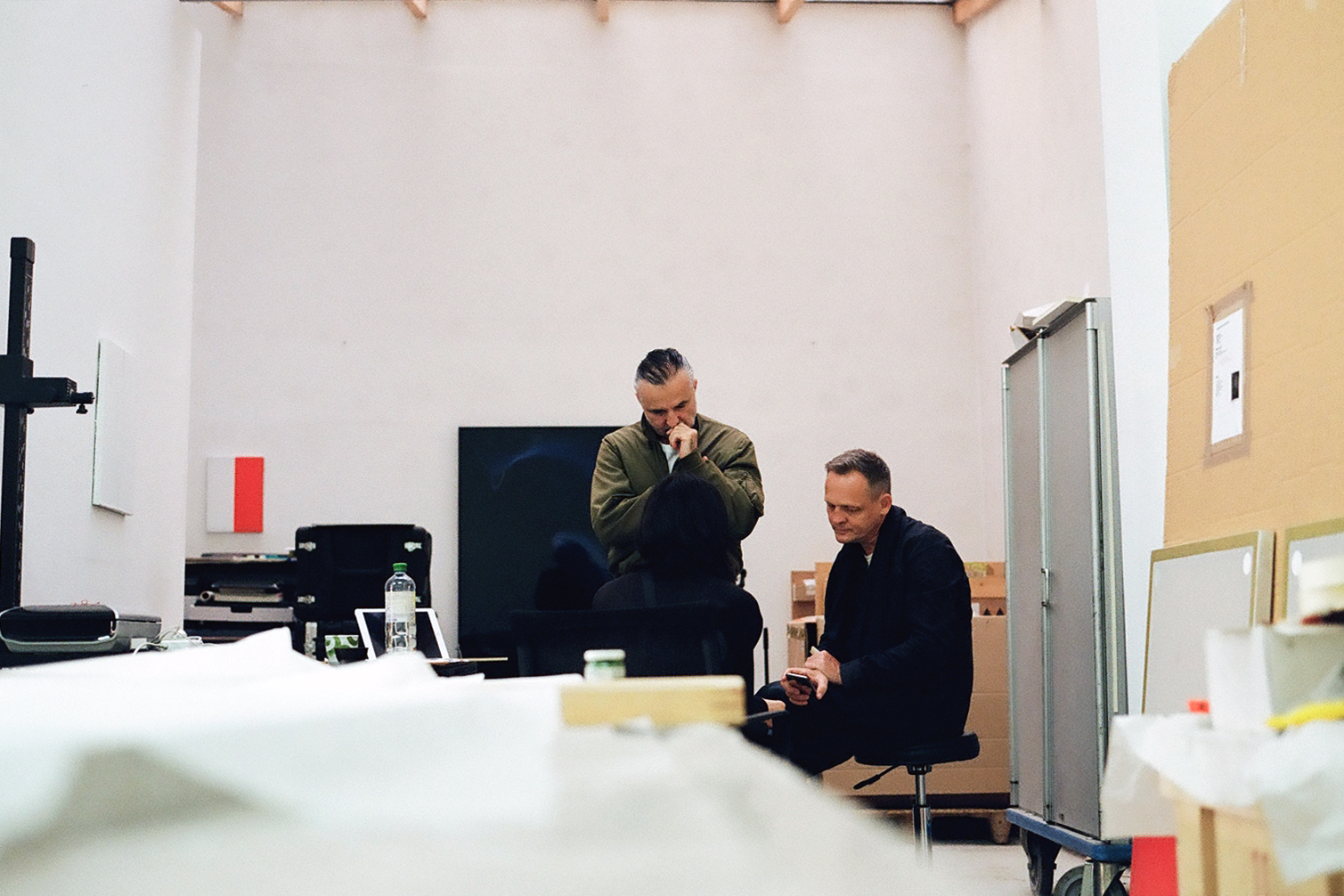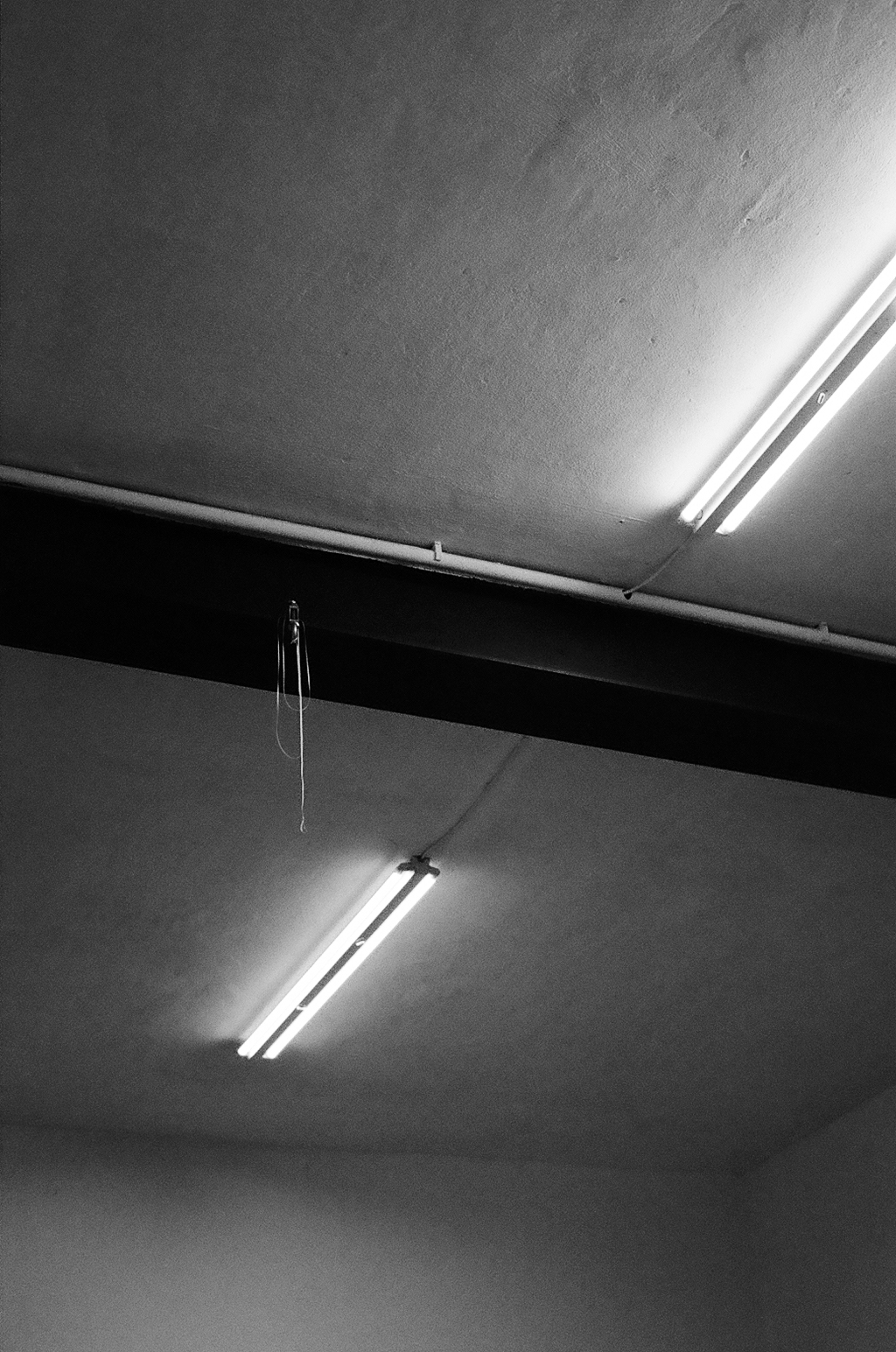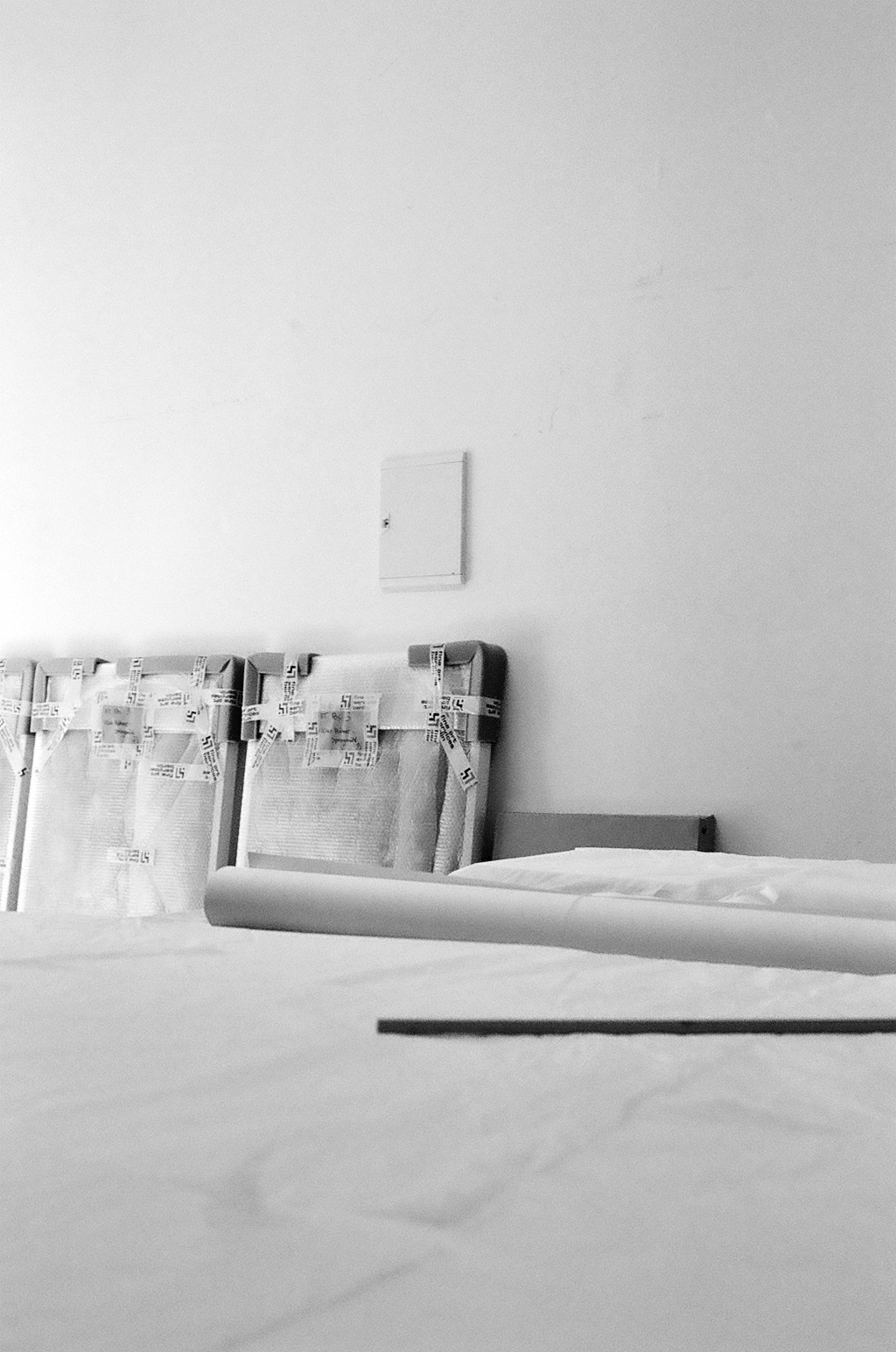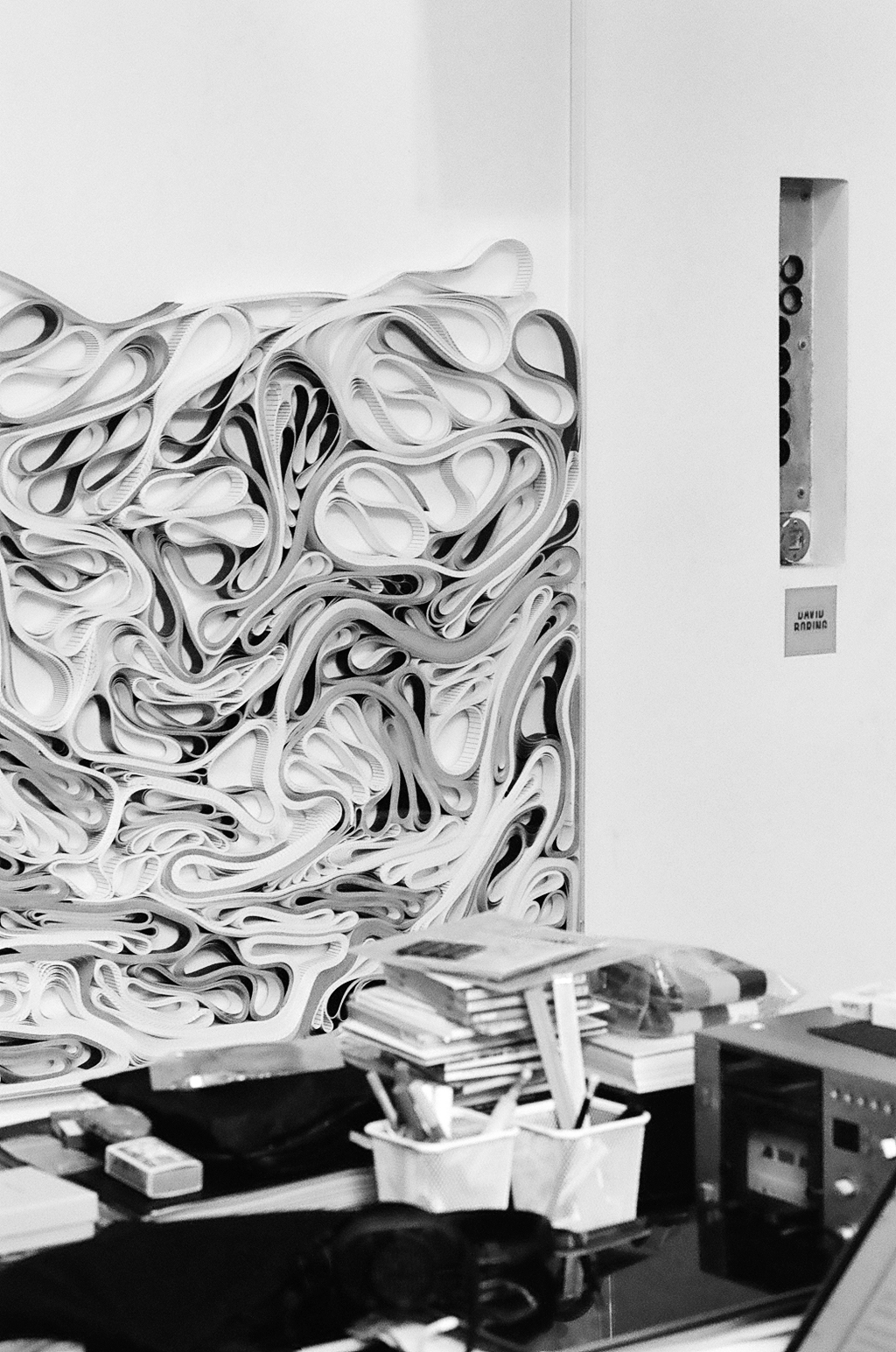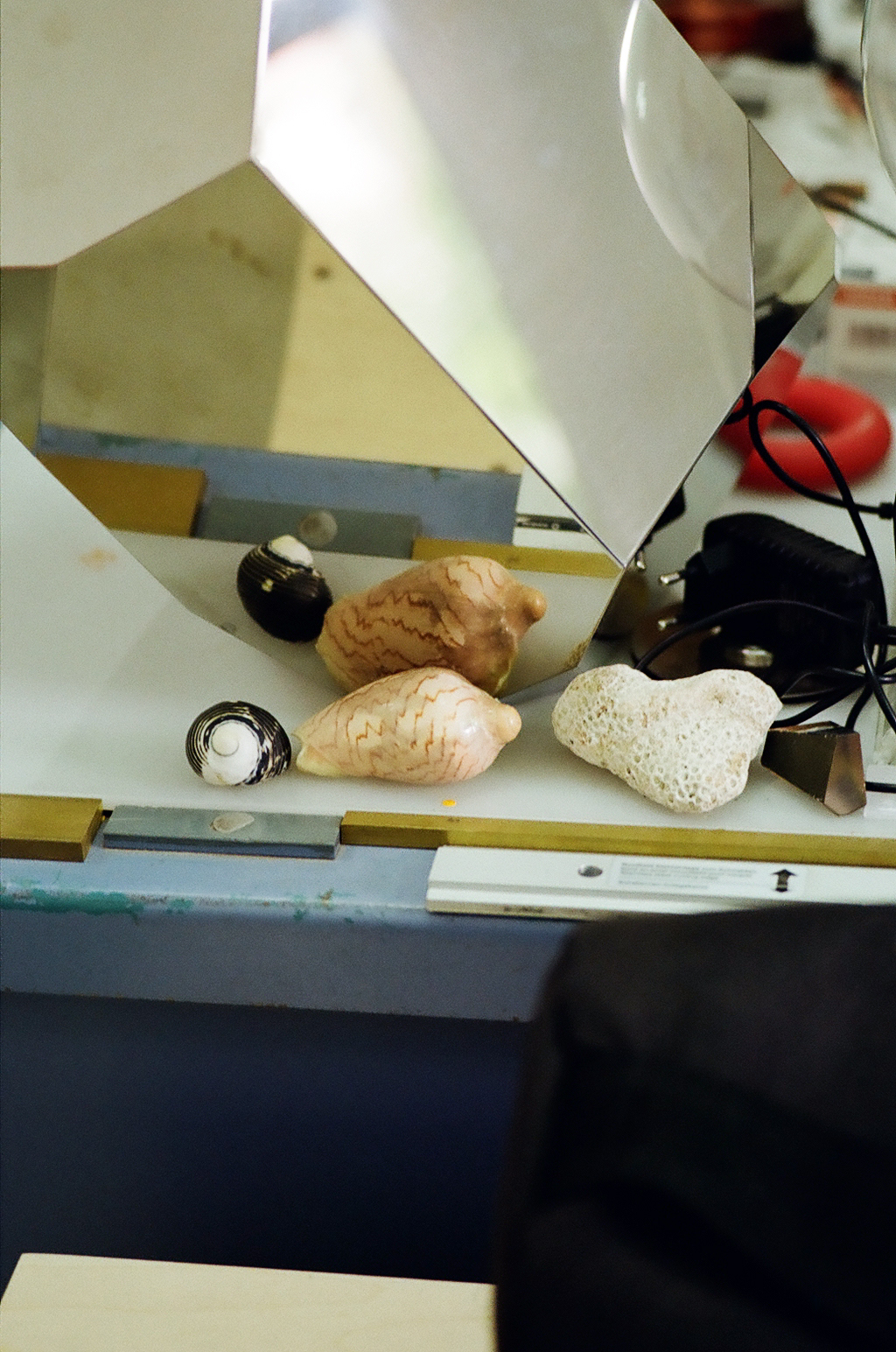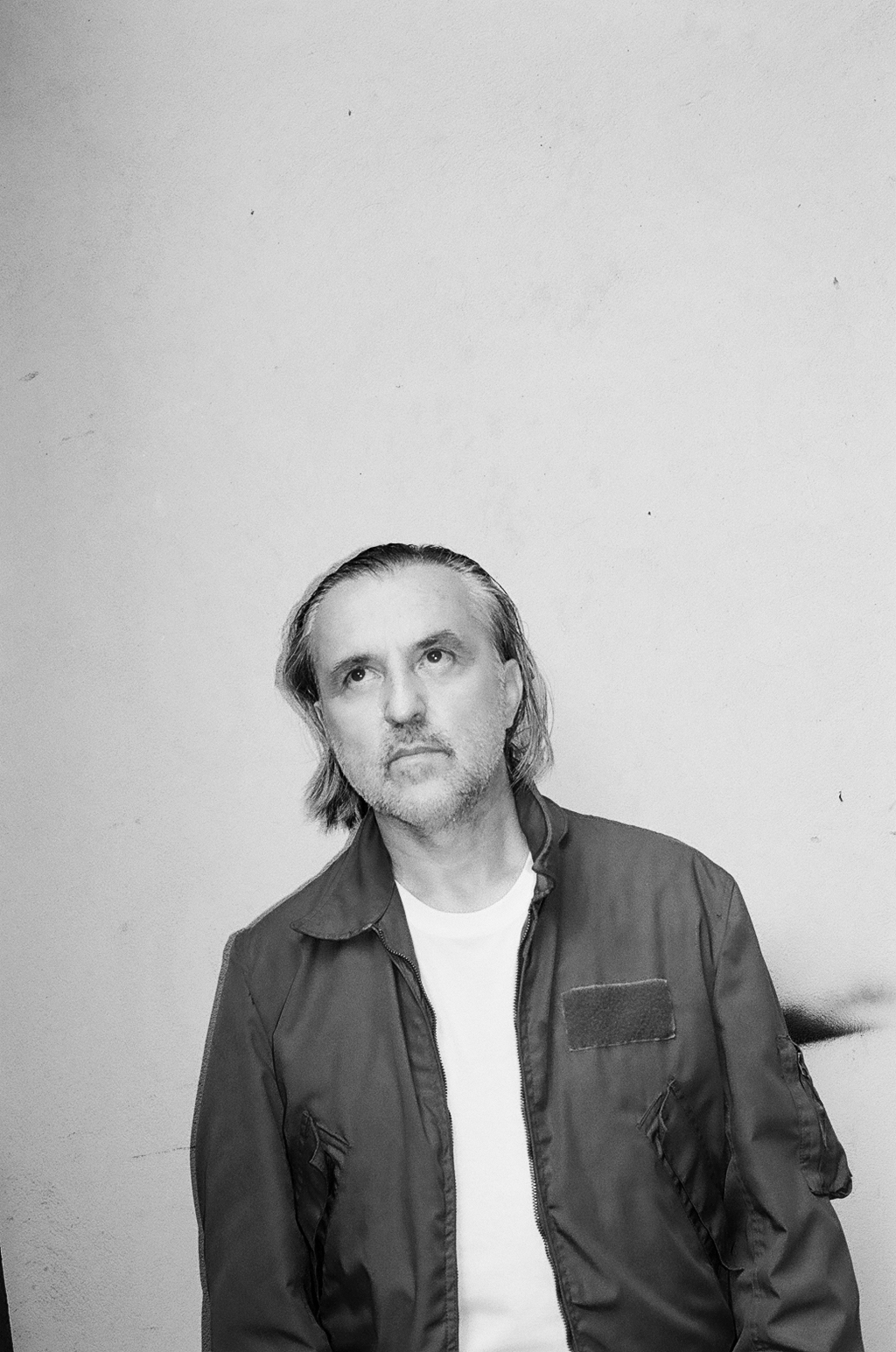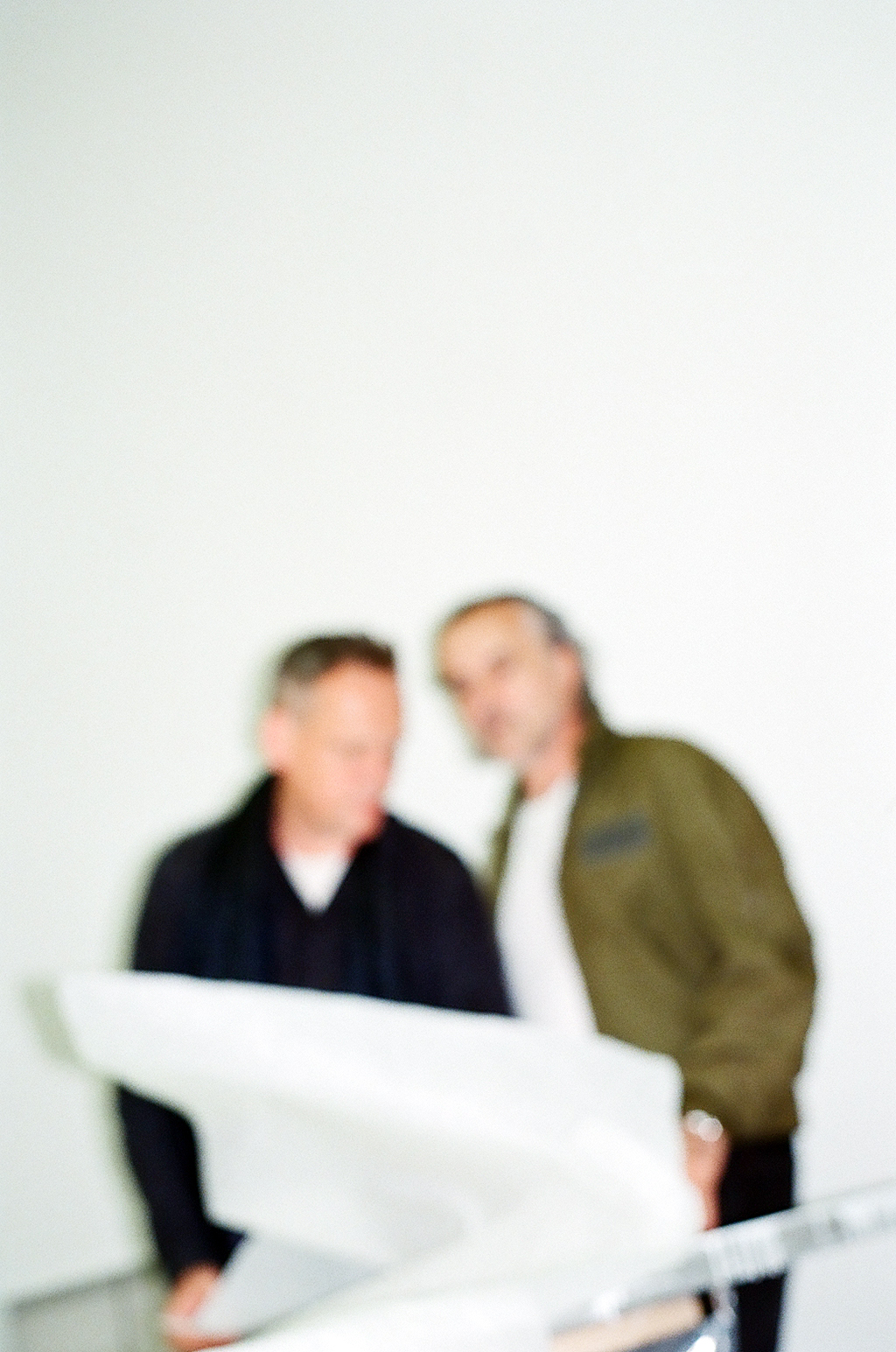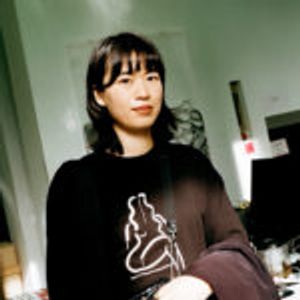Playing and working together. This truly exemplifies the relationship between the musician-cum-artist Carsten Nicolai, who is also known by the name Alva Noto, as well as the fashion designer Kostas Murkudis. The two men, who have been friends and collaborators for 25 years running, make a great pair that have produced numerous artworks to date, including the items and installations of Kostas Murkudis. We created an opportunity to talk in order to hear what they had to say. In Carsten’s studio, where the two frequently work together, we follow along with the story from when the two met down to the present.
ーーCould you please start by telling us how the two of you met?
Kostas Murkudis (referred to as Kostas below): We first met back in 1995 when Carsten held an opening at a gallery in Munich. At the time I was living in Munich, and went to the opening at the invitation of my younger brother Andreas (Andreas Murkudis). He said he had someone he wanted to introduce me to.
Carsten Nicolai (referred to as Carsten below): I had originally met Andreas when we were living in Berlin.
Kostas: After the opening he said “I”ve got some secret pieces I’d like to show you, come with me,” and brought us outside. I was surprised that he then held a secret, private exhibition in a parked car on a street late at night.
Carsten: Yeah, that one was special. Wasn’t it a single massive drawing?
Kostas: No, I think it was a lot of drawings (laughs).
Carsten: Ah, maybe so. I don’t really remember.
Kostas: I remember it quite well (laughs). Carsten was hesitant about showing these works to the gallerist, and seemed to be somewhat lacking in self-confidence. But your works were absolutely beautiful and I loved them. I remember that you gave me those pieces as a present the following year after my first collection.
――And from there your friendship continued to deepen.
Carsten: After Kostas moved to Berlin we just grew closer and closer. There wasn’t anything particularly special to it, it just happened naturally.
Kostas: When the two of us would meet up we’d talk about art, work, girlfriends and friends, politics, and everyday happenings. These conversations would generate ideas in us.
Carsten: Because we aren’t work colleagues, but personal friends. Since we have been acquainted for so long there are times when we meet up every day, and times when we don’t meet for three months or more due to work or travel. But when we return we make an effort to get together and talk about what we’ve been doing recently and what’s happened to us up to then.
Kostas: I feel like we’ll go on forever in this way. Or at least for as long as we’re still alive.
The collaborations between the two began via a natural course of events
――When did you begin collaborating with one another?
Kostas: I think it was in 1997 when we worked on a T-shirt for my second collection. I designed and printed a symbol with Carsten.
Carsten: Initially there were lots of pieces that involved printing on unique materials not used in fashion. Like paper textile dresses and the like. We’ve also test printed silk screens in this studio. Paintings that were abstract to me would be turned into abstract design pieces by Kostas. Only they were wearable. So it was in this manner that we evolved to a more experimental level of fashion. From there we photographed the pieces as art objects without any models, and came to take charge of the lighting and sound for fashion presentations and installations.
Kostas: Do you remember the Milano Collection from 2015? The fashion journalist Luke Leitch who watched the show wrote something to the effect that it was way too loud and that everyone in the venue was kind of freaked out by it, and that it messed up everyone’s ears. I couldn’t help but have a chuckle when I read that (laughs). It was incredible.
Carsten: But if I’m being honest, they weren’t all that radical. The installations at the MMK Museum of Modern Art in Frankfurt were much more radical. In a normal show the models walk the runway and it’s over in ten minutes, but in an art gallery space it’s totally fine if the people don’t move. That way they can better represent sculpture objects.
Scenes of Japan as seen from their eyes
――You two are generally regarded as Japanophiles. When did you first visit Japan?
Carsten: For a concert in 1997. Since then I’ve gone to Japan at least twice a year. I stopped counting after my 50th trip. Because I’ll go about four or five times a year when I get to go often. I have tons of friends in Japan, but they always say that I find more interesting things there than my friends in Tokyo do.
Kostas: It was 1997 for myself as well. I first came to Japan in the autumn at the invitation of a buyer in Japan. I had dreamed about going to Japan, so I figured there was nothing for me to do but go. The CEO was British, and they showed me around and went to Shibuya with me. But back then there weren’t any iPhones and there was no information in English. I remember bringing a map and compass with us and the two of us somehow found our way to the station. Now that I think about it, winter of 2017 was the first time we met up in Japan, wasn’t it? We did a live performance with Ryuichi Sakamoto at an event at the Canadian embassy. Where the Isamu Noguchi rock garden is located.
Carsten: It was a Glenn Gould tribute concert. Sogetsu Kaikan was an amazing venue.
――Do you have places you absolutely must visit when you come to Japan?
Carsten: I have to visit Kyoto, particularly the Japanese gardens. There are two Japanese gardens that I always just have to go to. These are Daitoku-ji’s Koto-in Temple and Shodenji Temple. I think that maybe Shodenji Temple isn’t as well known compared with other famous tourist attractions. The first time I visited Kyoto I walked around to try to make it to every single garden, where I found it by chance while I was walking around trying to find Ryoan-ji Temple. It’s right next to a golf course, so if you lose your way you’ll end up on the golf course (laughs).
Kostas: Well then I guess you better bring your golf clubs and shoes (laughs). Kyoto is a must-visit for me as well. I buy tons of kimonos at the markets and vintage shops, and like to spend a leisurely time visiting the temples and gardens.
Carsten: In Tokyo, I love the Nakameguro and Ebisu area, so I always stay there. It has great bookstores, and I love the atmosphere there. A while back it wasn’t the fashion area it’s now become, but it had a number of bars I really liked. I forget the names, but I think they must have either relocated or closed up shop. Tokyo is tricky. Even when you find restaurants and bars you like the pace is too fast there, and they tend to disappear quickly.
Kostas: The pace at which buildings get replaced is fast and furious.
Carsten: Truly. If I still have some spare time left I go to Ueno. There you can get a feel for the Tokyo of the 1970s. And I can’t leave out the Watari Museum of Contemporary Art. It was the first venue in Japan to hold solo exhibitions, and I’d love to meet the owners.
Kostas: I had previously gone to Kamakura by train with the fashion journalist Takeji Hirakawa. Everything from the buildings to the scenery and the atmosphere were just like something out of an Akira Kurosawa film. For the food as well, I got to eat my fill of not just sushi and sashimi, but also regional cuisines that give you a feel for the culture. I’m always looking to encounter places I’ve never been before and things I’ve never seen before. Now that I think of it, one time I went to a manga store with Nibo (Carsten’s assistant).
Carsten: It was Mandarake.
Kostas: Yeah, that one. It was incredible. Nibo didn’t seem to want to go inside, but I just said we’re going together and went in (laughs). I was glad to be able to see a part of Japanese culture, and an alternative scene, that is completely different from that in Europe.
The dream documentary project they are planning in secret
――The collaborative items for JAM HOME MADE you released last year are still fresh in my mind. If you were to do another collaboration set in Japan in the future, what would you like to do?
Carsten: Actually, we’re in the process of approaching museums in an effort to do a project together. Our idea is to go to Japan to gain inspiration from techniques from traditional handicrafts and the like as well as the culture. At the same time we would film a documentary, but one that would be different from mere typical documentaries. It would have a feel closer to that of making an experimental film than that of an exhibition.
Kostas: We would work together and hold conversations with people in the field, and film the whole process. The exchange would be that of a cultural conversation. While it would be a film, it would also be a performance.
Carsten: I feel that when I first went to Japan, it brought into view things that I hadn’t been able to see before. Because there has always been this “cultural feedback system” between Asia, particularly Japan, and Europe. For example, there are Japanese artists who have been influenced by the Bauhaus art movement, while the Bauhaus movement itself has been significantly influenced by Japanese culture. This cultural back-and-forth is always ongoing. And that being the case, it makes it extremely hard when you start to consider who did something first, and where the original came from. But I feel that this is indicative of this “cultural feedback system.”
Kostas: That’s exactly right. You learn about different cultures, and through that you give rise to new creations. It is of profound interest, and in some sense is a dreamlike scenario.
Carsten: We are still in the process of thinking through various ideas, but right now Kostas and Nibo are doing lots of research on handicrafts, techniques, and technologies. If this were to come about we’d probably be staying in Japan for quite a while.
Kostas: I would absolutely love for this to come about, but there are a number of open questions such as whether we would realistically be able to pull it off, and whether Japan and Germany would lend us assistance in this. But we don’t just want to go to Japan. We want to take a deep dive into Japanese culture.
Carsten Nicolai
Born in 1965 in Karl-Marx-Stadt (currently Chemnitz) in former East Germany. Moved to Berlin in the latter half of the 1990s, and is currently based out of Berlin and Chemnitz. As an artist, holds installations and releases visual artworks, and is also active as a musician under the name Alva Noto. Has high name recognition in Japan through his collaborations with Ryoji Ikeda as the musical unit Cyclo, as well as with Ryuichi Sakamoto. Worked on the soundtrack for the film The Revenant in 2016, which was nominated for a Grammy Award, among others.
Kostas Murkudis
Born in 1959 in Dresden, Germany. Resides in Berlin. Served as assistant designer to Helmut Lang from 1986 until 1993, and established his own label Kostas Murkudis in 1994. Released collections in Paris between the years 1996 and 2001. Has also acted as the creative director and a consultant for fashion brands like New York Industrie. Has focused on his own label since 2016, and has been developing innovative textiles and wearable items.
Photography Ina Niehoff

